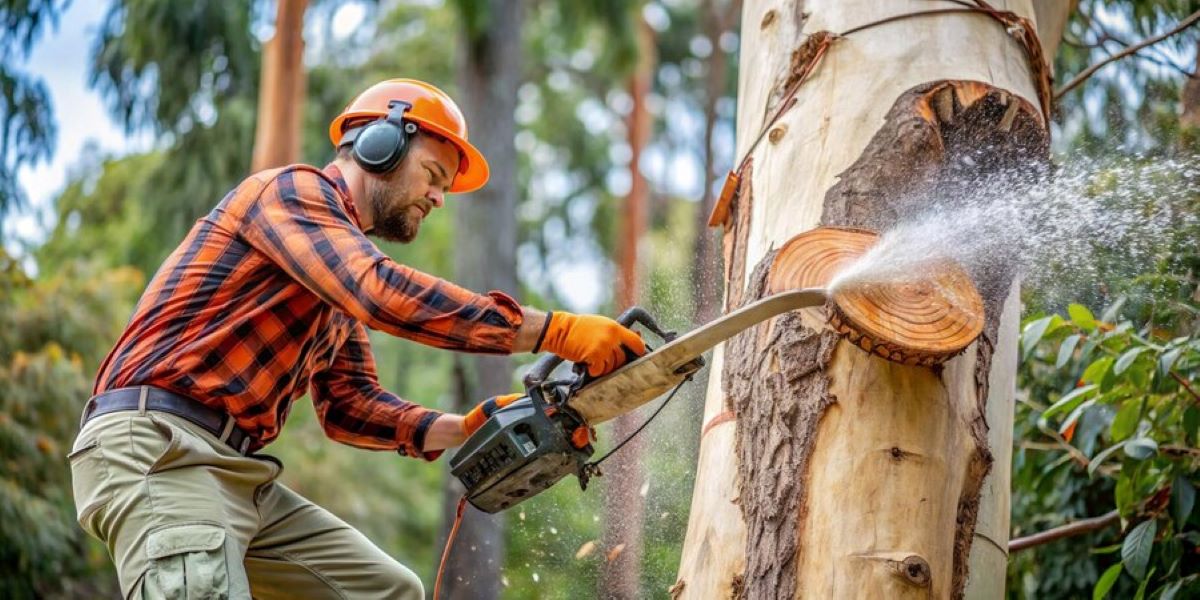Trees are often seen as assets for any property, providing shade, privacy, and natural beauty. However, poorly placed, damaged, or overgrown trees can negatively impact both your home’s curb appeal and its market value. Knowing when and how to remove a tree can make a significant difference in enhancing your property’s overall appearance and resale potential.
This guide explores the benefits of tree removal for homeowners, practical safety tips, common mistakes, and why hiring a professional arborist can be a smart investment.
When DIY Tree Removal Might Be Considered
While professional tree removal is often the safest option, some homeowners may consider DIY removal under specific circumstances:
1. Small, Non-Hazardous Trees
Trees under six meters tall and located away from structures or power lines may be removed safely with hand tools or a small chainsaw.
2. Minimal Landscaping Impact
If removing a tree won’t disrupt surrounding plants, irrigation systems, or garden features, DIY may be feasible.
3. Accessible and Open Areas
Trees in open spaces with clear escape paths and no nearby hazards are safer for DIY cutting.
Even in these scenarios, homeowners should evaluate the risks carefully and ensure proper planning and safety measures.
Benefits of Tree Removal for Property Value and Curb Appeal
Properly removing certain trees can significantly enhance your property’s aesthetic and financial value:
1. Enhanced Curb Appeal
Overgrown or unsightly trees can overshadow your home, block windows, or create a cluttered look. Removing them can open up space, highlight landscaping features, and make your property more visually appealing.
2. Increased Safety and Reduced Liability
Damaged, diseased, or leaning trees pose a risk to structures, vehicles, and people. Removing hazardous trees ensures a safer environment, which can be attractive to potential buyers.
3. Improved Lawn and Garden Health
Overcrowded areas with too many trees reduce sunlight and airflow, affecting grass and garden growth. Tree removal can rejuvenate your yard, improving its vibrancy and health.
4. Maximized Usable Space
Removing unnecessary trees creates space for patios, gardens, pools, or recreational areas, increasing both functionality and property appeal.
5. Positive Impact on Market Value
Potential buyers are often attracted to well-maintained, safe, and visually appealing properties. Removing problematic trees demonstrates proactive care and can increase resale value.
Practical Safety Tips for Homeowners
Even when improving curb appeal, tree removal can be dangerous. Keep these safety tips in mind:
1. Wear Protective Gear
Always use a helmet, gloves, safety goggles, and steel-toe boots. Chainsaw use requires ear protection.
2. Assess Tree Condition
Check for decay, cracks, or leaning trunks. Unstable trees should only be removed by professionals.
3. Plan Escape Routes
Always identify multiple paths to retreat while cutting a tree to avoid accidents.
4. Inspect Tools
Chainsaws, ropes, and ladders must be in good condition. Malfunctioning equipment can lead to injury.
5. Avoid Risky Conditions
Do not remove trees during rain, high winds, or slippery conditions.
Common DIY Tree Removal Mistakes
Understanding frequent errors can help prevent injury or property damage:
1. Underestimating Tree Weight
Storms or water saturation can make trees heavier and less predictable during cutting.
2. Cutting Without Proper Direction
Incorrect notching or cutting angles can result in uncontrolled falls.
3. Ignoring Surroundings
Nearby buildings, fences, or utilities are hazards often overlooked by homeowners.
4. Overconfidence With Chainsaws
Operating a chainsaw without experience or proper precautions is one of the leading causes of accidents.
5. Skipping Post-Removal Planning
Failing to remove stumps, level the ground, or restore soil can detract from yard aesthetics and curb appeal.
Why You Should Hire a Professional Arborist
Certified arborists offer numerous benefits when it comes to property improvement:
1. Expertise and Training
Professionals understand tree biology, structural integrity, and safe removal techniques.
2. Specialized Equipment
Cranes, rigging systems, and professional-grade chainsaws allow safe and efficient removal without damaging nearby property.

3. Compliance and Insurance
Arborists ensure legal compliance for tree removal and provide insurance coverage for accidents or damage.
4. Emergency and Complex Removals
Large, leaning, or diseased trees require professional handling for safe removal.
5. Efficient Cleanup and Aftercare
Professionals manage debris, grind stumps, and restore the area, leaving your yard clean and visually appealing.
Post-Tree Removal Yard Maintenance
Proper aftercare enhances both safety and property aesthetics:
1. Stump Removal
Grind or chemically treat stumps to prevent regrowth or pest infestation.
2. Soil Restoration
Fill holes with nutrient-rich soil and replant grass or shrubs for a vibrant yard.
3. Debris Management
Recycle wood, create mulch, or dispose of branches safely.
4. Landscaping Adjustments
Rearrange plants or add features like patios, flower beds, or walkways to enhance curb appeal further.
5. Regular Tree Maintenance
Prune remaining trees regularly and monitor their health to prevent hazards and maintain a polished look.
Final Thoughts
Removing trees can be a strategic way to improve your home’s curb appeal, safety, and property value. While small, non-hazardous trees may be removed safely by homeowners, hiring a certified arborist ensures complex or dangerous trees are handled professionally. Proper post-removal care and landscaping can transform your yard, making your property more attractive and market-ready.



